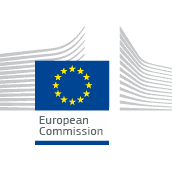
Blue economy - EMFF-03-2018
Deadline: Jan 31, 2019
CALL EXPIRED
CALL EXPIRED
Aquaculture
Marine and Coast
Maritime Affaires and Fisheries
Entrepreneurship and SMEs
Energy Efficiency
IT Applications
Nanotechnology and Nanosciences
Maritime transport
Business Development
Internet of Things (IoT)
Specific Challenge:
As outlined in the policy background in section 1, recent reports[1][2] underlined the existence of considerable funding gaps in scaling up projects from pilot to demonstration projects and moving from demonstration to flagship/first-of-a-kind and industrial-scale projects in different blue growth sectors. In this context, this topic aims to support demonstration projects based on innovative technologies testing/deploying/scaling-up of new industrial or service applications and solutions for the blue economy[3].
Such support is important to:
- Help innovative technologies and/or maritime services improve their market readiness and advance towards market entry, allowing economic players, in particular SMEs, to apply new ideas and research results in marketable goods and services;
- Facilitate scaling up business models and service concepts;
- De-risk the deployment of these demonstration projects and provide the necessary credibility for these projects to enable them to access other financing for the development of their activities.
Going beyond research/applied research, applicants must explain how their proposals will help innovative technologies and/or maritime services improve their market-readiness and advance towards the commercial phase demonstrating the benefit of a new product, service, process, and system to potential clients in a real environment.
In this respect, the Technology Readiness Level (TRL) of the proposed actions must be between 6 (“technology demonstrated in relevant environment”) and 9 (“actual system proven in operational environment”)[4], as defined in Commission Decision C(2014)4995[5].
Likewise, proposals must have a completed proof of concept and early field trials under way.
Scope:
In order to achieve the objectives above, proposals must:
-
tackle innovation that goes beyond research and aims at helping innovative maritime technologies and/or maritime services close to market-readiness to advance towards the commercial phase;
-
contribute to at least one of the EU priority areas of the Circular Economy[6], the (Blue) Bioeconomy[7], as well as the Energy union and climate[8];
-
demonstrate a clear link/application of enabling technologies such as imaging and physical sensors, satellite technologies, advanced materials, ICT, big data analytics, autonomous systems, biotechnology, nanotechnology, subsea engineering and/or are based on transferring technology from outside the maritime industry.
To promote the involvement of third-party investment, in particular by private financing bodies or National Promotional Banks[9] (NPBs), priority will be given to proposals that are at a sufficiently advanced stage in terms of securing funding from third party investors, e.g. as demonstrated by, for instance, a letter of intent by an investor to support the project.
As part of the evaluation process, priority will be given to proposals that build on the outcome of prior research or applied research projects, whether EU-funded or supported from other sources. In this context, proposals shall describe how they build on, complement and differ from finalised or ongoing research and innovation projects, including from EU programmes, if relevant. Where a proposal will operate in a particular sea basin in which a sea basin strategy or similar initiative exists[10], priority will be given to proposals that explain how they contribute to the objectives of the relevant sea basin strategy or initiative.
Applications submitted by a consortium are eligible (see eligibility criteria in section 5) but the partners of the consortium need to be an essential part of the demonstration activity and expected results (see award criteria in section 6). Partners could potentially be clusters, research organisations, innovation agencies, first clients, etc. providing services within the project that the main beneficiary, the company, cannot easily provide themselves or that are not easily subcontracted.
Expected Impact:
Applicants have to list the main results[11] expected from the project. The expected results to be achieved by the end of the project must be concrete, realistic and quantified as far as possible.
The list of expected results below is non-exhaustive and applicants may add other expected results if relevant.
-
New market opportunities for European industry and SMEs in high potential and innovative blue growth technology areas, domains or value chains;
-
More rapid market uptake of new technologies or industry applications, processes or services;
-
New transnational business and investment opportunities and value chains in high potential blue growth domains across a sea basin(s).
[1]Commission Staff Working document Report on the "Blue Growth Strategy Towards more sustainable growth and jobs in the blue economy", SWD(2017) 128 final.
[2]EIB - Study on Access to Finance Conditions for Investments in Bio-based Industries and the Blue Economy.
[3]See page https://ec.europa.eu/maritimeaffairs/sites/maritimeaffairs/files/2018-annual-economic-report-on-blue-economy_en.pdf
[4]The limit to the frame of intervention of the proposed actions is to pre-commercial activities
[5]See General Annex G of the H2020 Work Programme to assess the Technological Readiness Level of your innovation.
[6]http://ec.europa.eu/priorities/jobs-growth-investment/circular-economy/docs/communication-action-plan-for-circular-economy_en.pdf
[7]http://ec.europa.eu/research/bioeconomy/index.cfm?pg=policy&lib=strategy
[8]https://ec.europa.eu/commission/priorities/energy-union-and-climate_en
[9]http://www.eib.org/about/partners/npbis/index.htm
[10]Sea basins strategies and other relevant sea basin information for the Atlantic, Baltic Sea, Black Sea, Mediterranean or North Sea:
https://ec.europa.eu/maritimeaffairs/policy/sea_basins_hr
[11]Results: capture more direct, short to medium term changes in a situation, which are achieved by the end of the project. E.g. if four FTE jobs are expected to be created by the end of the project, this will be an expected project result.
Public link: Only for registered users
 EC - European Maritime, Fisheries and Aquaculture Fund (EMFAF)
EC - European Maritime, Fisheries and Aquaculture Fund (EMFAF)


Please Log In to See This Section